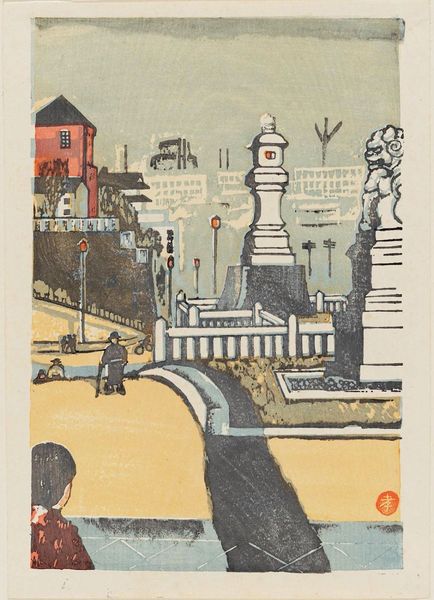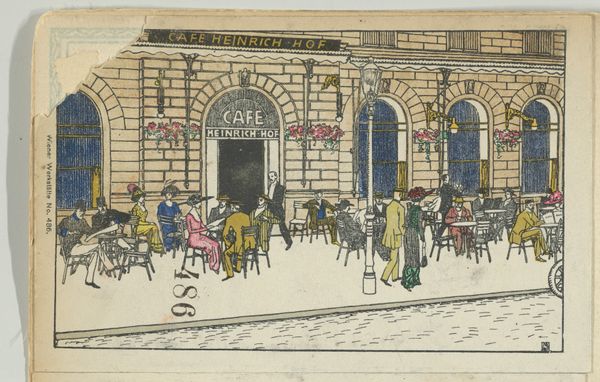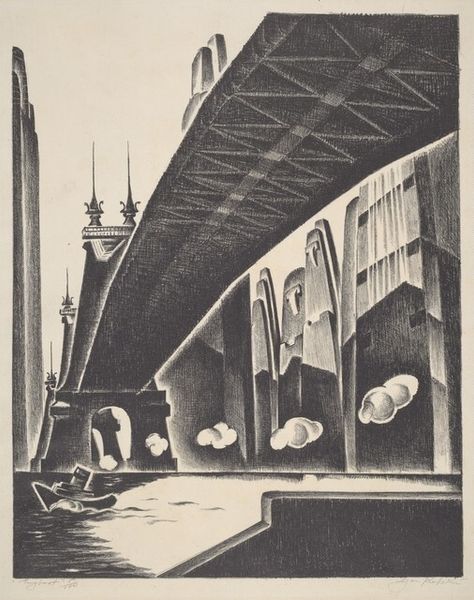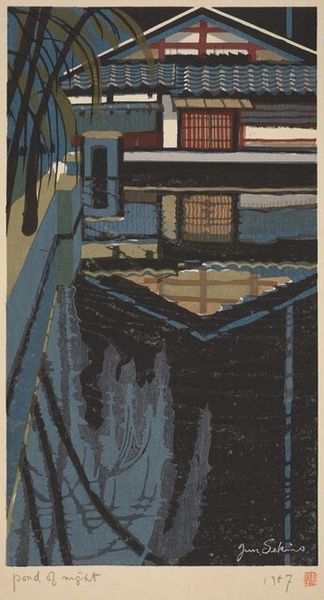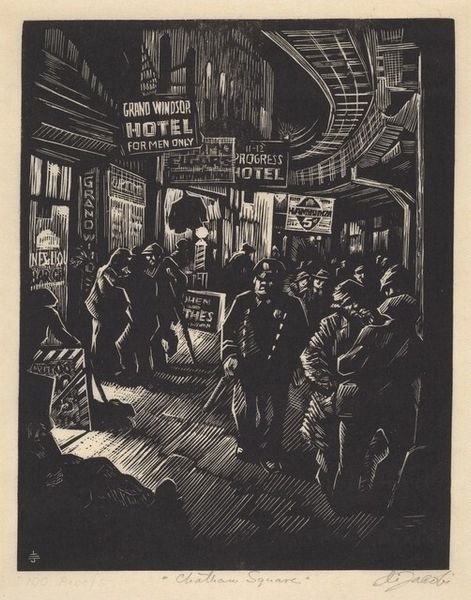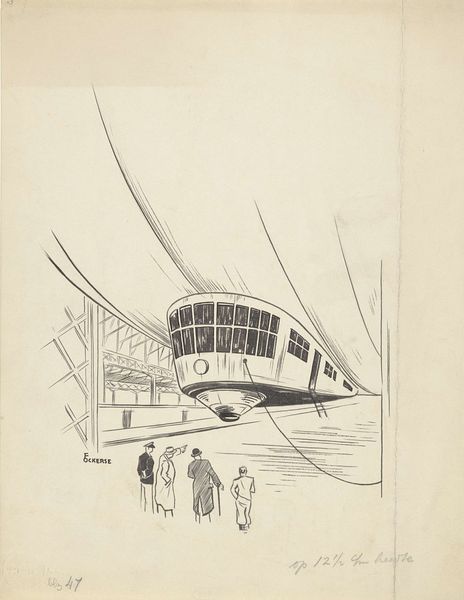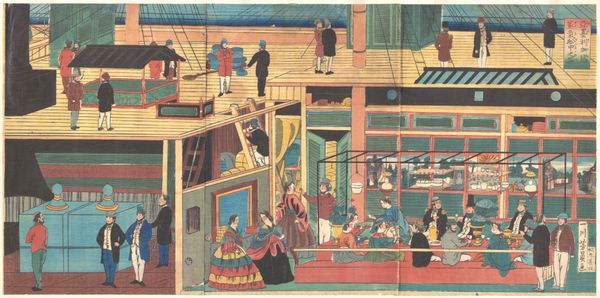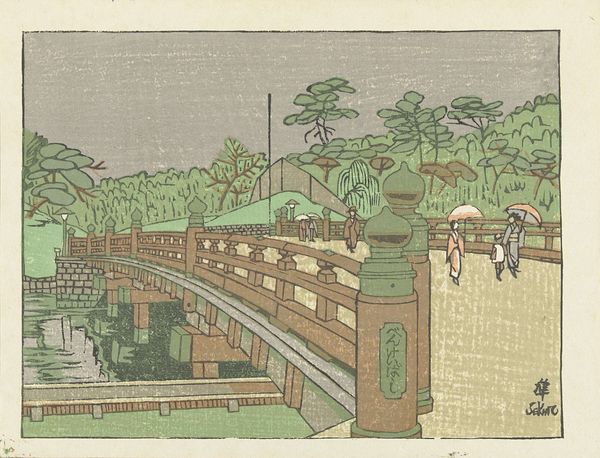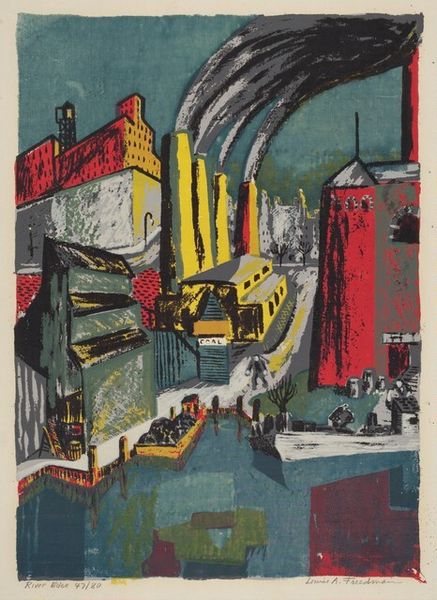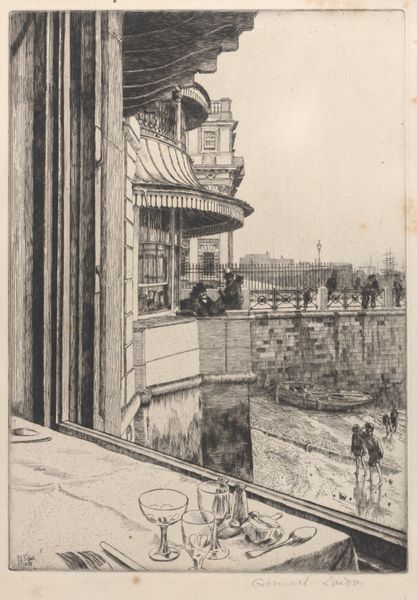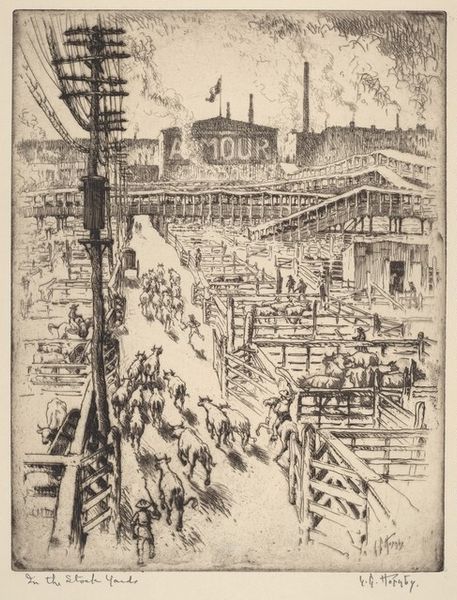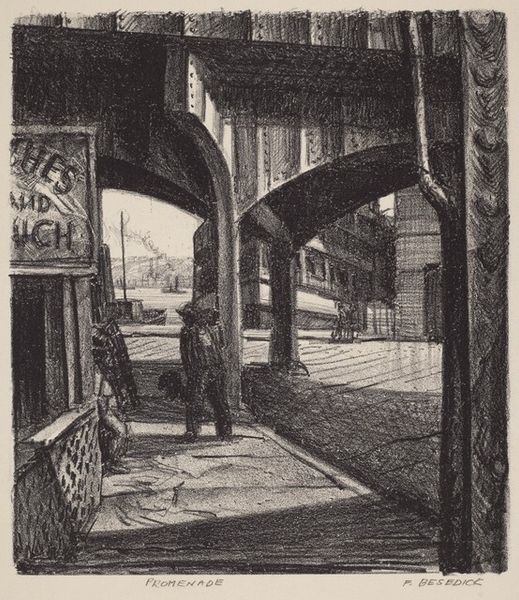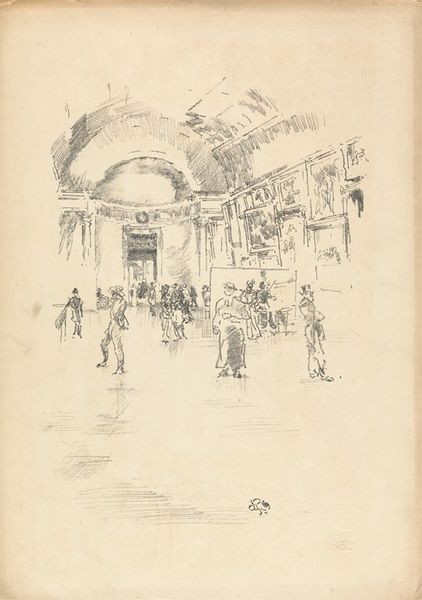
Dimensions: height 257 mm, width 200 mm, height 356 mm, width 293 mm
Copyright: Rijks Museum: Open Domain
Editor: So, this is Koshiro Onchi’s “Tokyo Station,” a woodcut print from 1945 currently held in the Rijksmuseum. The flat planes and somewhat muted colours give the scene a quiet, almost melancholy feel despite depicting what would usually be a busy transportation hub. What stands out to you most about it? Curator: The date is crucial, 1945. Japan has just experienced immense trauma; societal structures are shifting. Here, Onchi isn't just showing us a train station, but rather the public face of a nation processing profound change. Do you notice how the figures are somewhat anonymous, lacking detail? Editor: Yes, they seem very uniform and shadowy, almost like silhouettes. Curator: Precisely. That anonymity speaks to the collective experience, the shared grief and uncertainty. He depicts the institution of the station and not the individual. The geometric rigidity of the station architecture contrasts with the softer human figures, emphasizing this tension. How do you see the use of such familiar architectural features reflected? Editor: It's as if he's stripping away the individuality to focus on a broader social commentary about resilience in the face of something colossal. It looks really bleak because of those colours; what might that symbolize? Curator: Consider that red and white also carry significance in Japanese symbolism, often associated with purity and renewal. Their use here could be interpreted as a subdued hope amidst the devastation. It's a quiet declaration about a nation's enduring spirit, subtly woven into this image of a everyday scene of transit. Editor: That gives the whole piece a new dimension, it isn't just melancholic; it embodies perseverance and hope. I hadn't considered the implications of such recognizable colors, that context gives real value to those features. Curator: Absolutely. This is more than a cityscape; it's a historical and cultural document imprinted onto a woodblock. We have to remember the social impact in art as well as aesthetics.
Comments
No comments
Be the first to comment and join the conversation on the ultimate creative platform.
